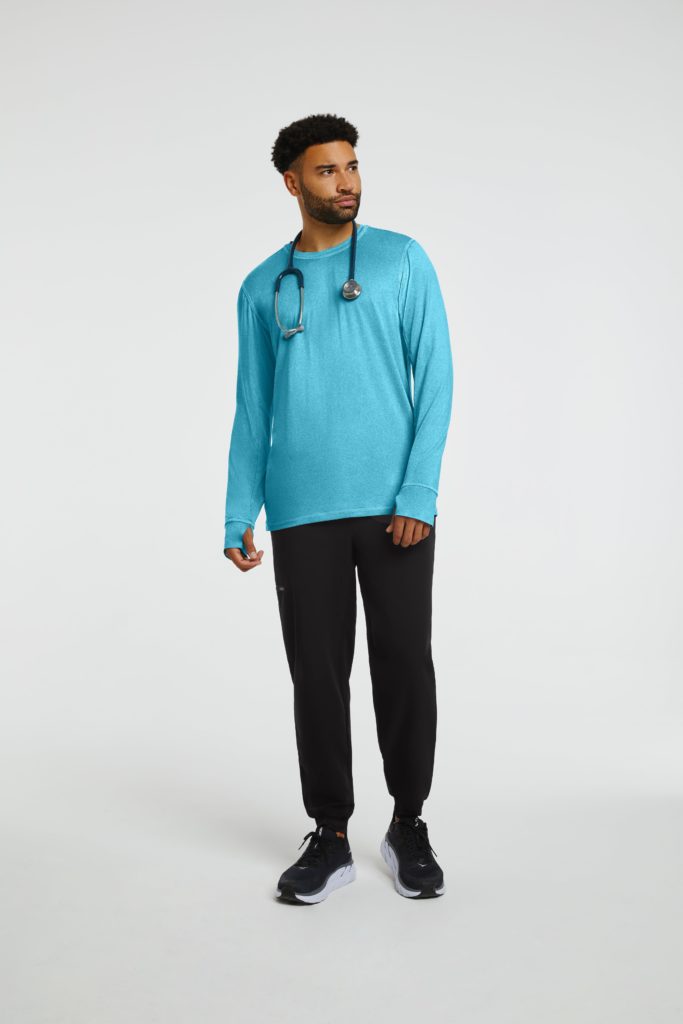
Here’s Why Your Ankles Are Swollen and How You Can Treat Them
If you’re a healthcare professional, one thing’s for sure—you work hard. Perhaps too hard, even.
But when you’re doing what you love and you’re concentrating on your patients, you may not even realize the amount of effort you’re putting in and the impact it can have on your body.
At the very least, you’re getting in a workout every day, making rounds with very little time to sit. This may be good for hitting your “steps” goals, but all that standing isn’t just working your calves; also giving you swollen, painful ankles. When you need to get up and work on your feet again the next day, aching ankles and feet are the last thing you need.
We’ll get to the bottom of what causes that pesky pain in your ankles, how to treat itandhow to prevent it. Read on for our tips and learn when to seek a second opinion if this condition persists.
Reasons for swollen ankles

As a medical professional, you know if something is off, there’s a reason for it.Swelling is a sign of fluid or water retention. So what’s the reason for swelling in the ankles, legs, and feet (aka edema)?
Here are some of the main reasons for what causes swollen feet and ankles:
- Being on your feet for long periods
- Having a larger body type
- Being pregnant
- Consuming salty food
- Taking medications like birth control, hormones, steroids, and antidepressants
- Having an unhealed injury in this area of the body
The risks of standing all day long
As a healthcare pro, you’re likely to be on your feet most—or all—of the day. We never thought we’d say this, but the lengthy sit on your daily commute may be good.
However, you love your work, and when you’re in it, you’re probably not thinking about how long you’ve been standing. Try to create some consciousness around this: practice prevention and treatment methods to protect your legs from swelling and some of the other risks of standing for too long. These can include:
- Sore feet
- Varicose veins
- Tiredness/muscle fatigue
- Lower back, neck and shoulder pain
How can I treat a swollen ankle?
If you are—or ever were—an athlete, you know that “rice” isn’t only for sushi. RICE is also an acronym for rest, ice, compression and elevation. Get out an ice pack and get in the habit of doing this home treatment whenever you can:
- Rest: When you’re not at work, stay off your feet as much as possible. This is good for you in several different ways.
- Ice: Fire up your favorite series and ice the swollen areas for 15-20 minutes (which is conveniently about as long as a commercial-free sitcom episode) to reduce inflammation.
- Compression: Compression is a great treatment and a good prevention technique for swelling in the feet, ankles and legs. You can wrap the area or use compression garments.
- Elevation: When you get home from work, kick your feet up—literally. The higher you can raise your feet, the better. Put some pillows under your legs or support them on the armrest of your couch. Try to get your feet above your heart.
How can I prevent swollen ankles?

Now you know the causes of edema and some ways of treating it, but you can also take what you know and apply it to prevent the problem from worsening or even occurring in the first place. Here’s a complete list of tips:
- Watch your salt intake
- If you have to be on your feet all day, try to move around rather than standing in one place
- Stay hydrated
- Wear compression garments like socks, leggings or special compression scrubs
- Consider alternatives (after consulting with your doctor, of course) to any medications that could be causing your feet to swell
Swelling: When to see a doctor
Swelling can signify a wide range of serious medical conditions and illnesses, but if you’re on your feet all day, it makes sense that you’d have some swelling. It doesn’t necessarily have to cause alarm.
However, if you have persistent ankle swelling—especially if other symptoms accompany it—it’s probably best to see a doctor. Below are some of the more serious swelling causes, which will require more nuanced treatment than just resting and icing. The good thing is that as a medical professional, you know what to look out for in your patients, so look for the same signs in yourself:
- Liver disease
- Kidney disease
- Heart failure
- Ankle injuries like a sprain
- Infection
- Blood clots
- Rheumatoid arthritis
- Deep vein thrombosis (DVT)
- Lymphedema
- Preeclampsia
Other conditions that affect healthcare professionals

Consider this our official PSA to remember to take care of yourself. When you’re taking care of others, your own needs may be taking a backseat. Here are some common conditions that affect medical professionals:
- Occupational hazards (biological, cuts, contamination, disease, pathogens)
- Mental health concerns (burnout, stress and substance abuse)
- Injuries (everything from swelling to more severe injuries like fractures caused by slips or falls)
- Radiation exposure
- Hypertension
- Diabetes
Being a healthcare professional is hard work, and it can take its toll on the body. That’s why we try to keep you comfortable at work with everything from breathable face masks to compression scrubs. We’d say we’ve got your back, but today, we’ve got your ankles.